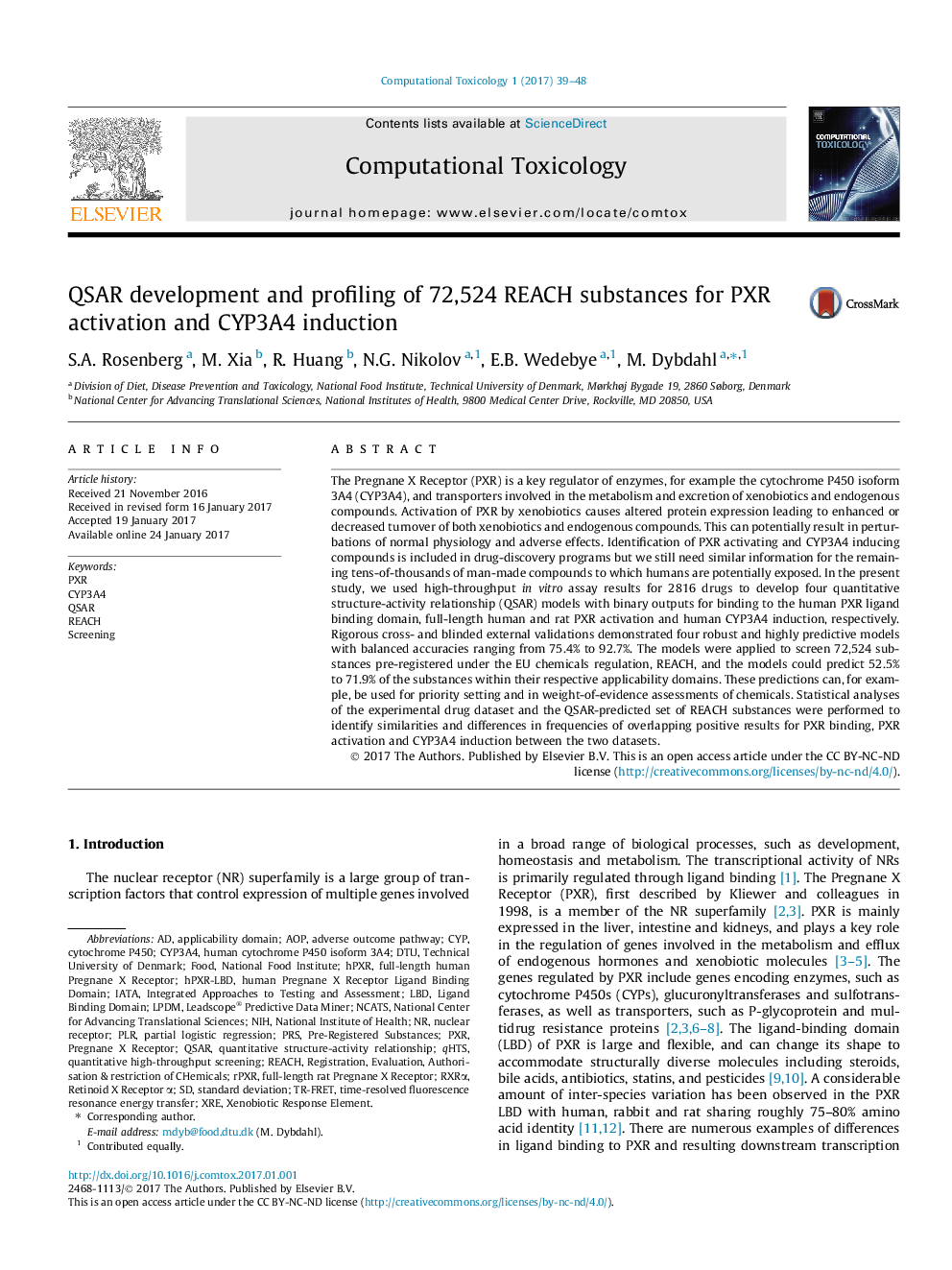| کد مقاله | کد نشریه | سال انتشار | مقاله انگلیسی | نسخه تمام متن |
|---|---|---|---|---|
| 5517330 | 1543165 | 2017 | 10 صفحه PDF | دانلود رایگان |

- QSARs for human PXR binding/activation and CYP3A4 induction and rat PXR activation.
- Highly performing and robust models according to the cross- and external validations.
- Screening 72,524 REACH substances for PXR binding/activation and CYP3A4 induction.
- Multiple comparisons in overlap of actives for PXR interaction and CYP3A4 induction.
The Pregnane X Receptor (PXR) is a key regulator of enzymes, for example the cytochrome P450 isoform 3A4 (CYP3A4), and transporters involved in the metabolism and excretion of xenobiotics and endogenous compounds. Activation of PXR by xenobiotics causes altered protein expression leading to enhanced or decreased turnover of both xenobiotics and endogenous compounds. This can potentially result in perturbations of normal physiology and adverse effects. Identification of PXR activating and CYP3A4 inducing compounds is included in drug-discovery programs but we still need similar information for the remaining tens-of-thousands of man-made compounds to which humans are potentially exposed. In the present study, we used high-throughput in vitro assay results for 2816 drugs to develop four quantitative structure-activity relationship (QSAR) models with binary outputs for binding to the human PXR ligand binding domain, full-length human and rat PXR activation and human CYP3A4 induction, respectively. Rigorous cross- and blinded external validations demonstrated four robust and highly predictive models with balanced accuracies ranging from 75.4% to 92.7%. The models were applied to screen 72,524 substances pre-registered under the EU chemicals regulation, REACH, and the models could predict 52.5% to 71.9% of the substances within their respective applicability domains. These predictions can, for example, be used for priority setting and in weight-of-evidence assessments of chemicals. Statistical analyses of the experimental drug dataset and the QSAR-predicted set of REACH substances were performed to identify similarities and differences in frequencies of overlapping positive results for PXR binding, PXR activation and CYP3A4 induction between the two datasets.
Journal: Computational Toxicology - Volume 1, February 2017, Pages 39-48